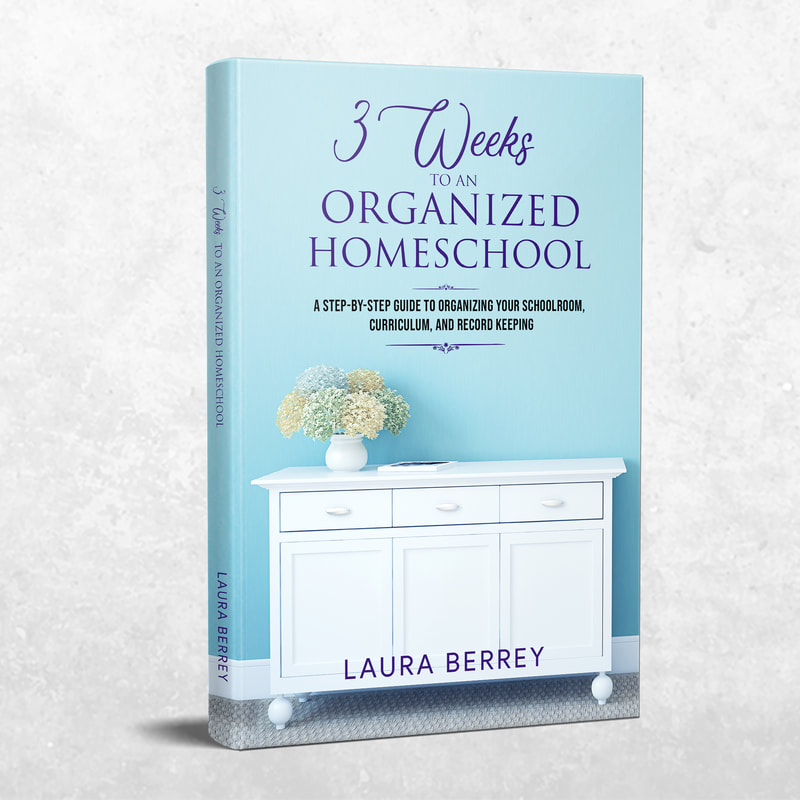|
Do your children freeze when given a writing assignment? Try these ideas to help them to express their creativity and ideas without fear. Writing is a necessary part of education. After reading, it will probably be one of the most necessary skills your child needs to know. Many colleges require essays on their applications. Almost every academic course your child will take will have papers assigned. And even beyond college, writing will always be an integral part of their life. But sometimes children have a hard time when facing a writing assignment, especially on the elementary level of education. What can we as homeschooling moms do to help our children learn to love to write? HOW TO HELP YOUR CHILDREN LOVE WRITINGMost of my children love writing and will write for hours on a computer or in notebooks. One of my children wrote an entire novel when they were in eighth grade. But they didn't all start out that way. I had several "reluctant" writers who acted like I was asking them to pull a mission impossible when they were given a writing assignment. How can we take children from reluctant to really excited about writing? The first step is to realize that writing is not a singular activity; there are multiple sets of different skills that add up to the process of writing. For example, writing requires thinking up what you are going to write (idea creation), arranging those ideas in a logical order (organization), figuring out the order of the words (grammar) and how to spell them (spelling), actually writing those things down on paper (handwriting) and then rearranging them or strengthening them (editing), making sure there are no errors (proofreading), and then making a final, polished copy (publishing). Often it also requires a performance of some kind (reading what you just wrote in order to share it with an audience). When a child balks at writing, there is probably some point in the writing process where he runs up against the rock-hard wall of one of these items and mentally freezes in dismay. The key to helping that child is to first isolate those problem areas, then to allow him to slowly adjust to them with your assistance in those areas, and finally to encourage him towards independence in writing. Let's break that down. 1. Idea Creation If your child tells his stuffed animals or younger siblings stories, if he enjoys narrating his dreams, or if he can re-tell a movie with a scene-by-scene replay, he should not have trouble with idea creation. However, even professional writers occasionally get writer's block. What can you do to help? You can offer story prompts, such as "I bent over to pick up a bright yellow feather off the ground and to my surprise. . . " For very young children you can offer sentence starters, or stories that you have written with blanks to fill in. 2. Organization of Ideas One of my sons came to me last night with a notebook and showed me a plot outline for a very exciting Revolutionary War era story. He explained to me that he was practicing plotting, and described to me the various parts of a plot. Although only in sixth grade, he already loves writing, spending hours with pen and notebook. But not every child loves the organizational aspects of writing like this. Some need prompting. For stories, you could walk them through their idea, asking questions in order to help them number the events. For non-fiction writing, like essays, give them a clear outline that they can always follow. For younger children, this may be as simple as an opening sentence stating the main point, two supporting details, and a closing sentence. For more complicated writing projects, teach your child to mind map. Writing the ideas in random order on a piece of paper and then drawing circles and lines between ideas to indicate relationships may be exactly the creative prompt and organization help your child needs. 3. Grammar/Spelling/Handwriting Especially for very young children, this is likely where the real challenge lies. They have lots of ideas, but the process of getting those ideas down on paper is tricky. There are so many possible sinkholes, and the journey is far too long for children whose normal attention span is short. You can help them with this by taking the weight off writing through dictation. I recommend starting children in writing at a very young age by allowing them to dictate to you while you type or write down their words. You will be flabbergasted by the creativity that flows from their young minds when the weight of physically writing is lifted from them. And don't worry that this will last forever! I find that this step often lasts only a short time, depending on the age of the child. They learn to enjoy the process so much that they start wanting to do it on their own. In fact, content creation is a creative activity, but grammar and spelling are actually editing activities that are primarily analytical. Creativity and editing are accomplished by two different parts of the brain, and most writing experts will encourage you not to mix the two. I would be very cautious about pointing out spelling errors or grammar errors during the creative process. Teach your child to spill his creativity on the page without worrying about those things, and then come back later to edit his work. Often people experience a mental block while writing because they are trying to accomplish too many different activities at once. Break it down and the words will finally start to flow. Definitely do not require your child to have perfect handwriting while writing their first draft. That can stunt a child's desire to write. Handwriting is a physical activity requiring coordination that young children often lack. If your child struggles at all with handwriting, save it for handwriting class and allow her to write freely for writing activities. Also consider typing your children's writing for them. This will remove the handwriting aspect entirely. 4. Editing and Proofreading Our homeschool curriculum does a beyond-excellent job of breaking the writing process down for children. (Thank you, BJU Press!) They teach every part separately and thoroughly, beginning with idea creation, mind mapping, and organization, and continuing all the way through to the final steps of editing, proofreading, and even publishing. Though often lumped together, editing and proofreading are not the same activity. Editing involves anything from rewriting or switching the order of whole sentences to finding more vibrant words to use. It often requires the use of a thesaurus. It may help you to think of editing as a second draft. The final draft is proofreading, and that requires checking the spelling in a dictionary, fixing any capitalization or punctuation errors, and correcting any other small mistakes. 5. Publishing Now is the time to pull out the handwriting skills (or typing skills), add pictures or whatever else they want to include, and make a clean final copy. Help them to write things they are proud of! Keep their writing in a binder so they can go back and re-read their work. Children love to do this and looking at a binder full of their own stories can help them own the title of writer. Teens or older children could even publish their work online for a wider audience reach. Those who are very interested in writing could start their own blog or website, which would teach them even broader skills related to writing and publishing and help them reach a wider audience for their writing. Through Amazon or other self-publishing platforms, you could take your child's longer works (such as a completed novel) and make a paperback copy of it as a keepsake, or perhaps even publish it online, depending on the quality of their work. 6. Performing Children don't need to perform all their work, but doing this will encourage them to be willing to share their writing. Even just reading it aloud to the family will help them overcome shyness and promote confidence. But if you can add non-family members, such as a homeschool group, you will take this to a higher level. Try to let them progress at their own rate for this. . . allow them to observe others first before doing it themselves. Some children are naturally good at performance and love the attention while others wither under it. Be sensitive to your child's personality, but encourage them to step outside of their comfort zone. And always create a supportive atmosphere for their performances. INFORMAL FUN WITH WRITINGOne last idea for helping your children to enjoy writing is to make it an informal activity.
There will be time for formal essays and stories, but if your child truly balks at writing, try just making it fun! In addition to the ideas above, which are best used for more formal writing education, give them times of writing where they don't need to do any of the editing, proofreading, or other formal activities related to writing. Let them just write, in much the same way they like to sit down and draw or color. Let it be a completely creative activity with nothing required at the end but fun. Try some of these ideas:
There are so many exciting ways to make writing fun for your children! Don't let writing intimidate them. As a homeschooling mother you have the wonderful opportunity to help them learn to love to write.
1 Comment
Melina
4/18/2020 02:22:11 am
Thank you, this has been very helpful😀
Reply
Leave a Reply. |
About the Author
Hi, I'm Laura. I've been homeschooling for over fifteen years. I have six children and I'm married to my best friend.
My Books
Sign up to hear about sales or new books and I will also send you a free printable Homeschool Planner.
Archives
September 2022
Categories
All
|




